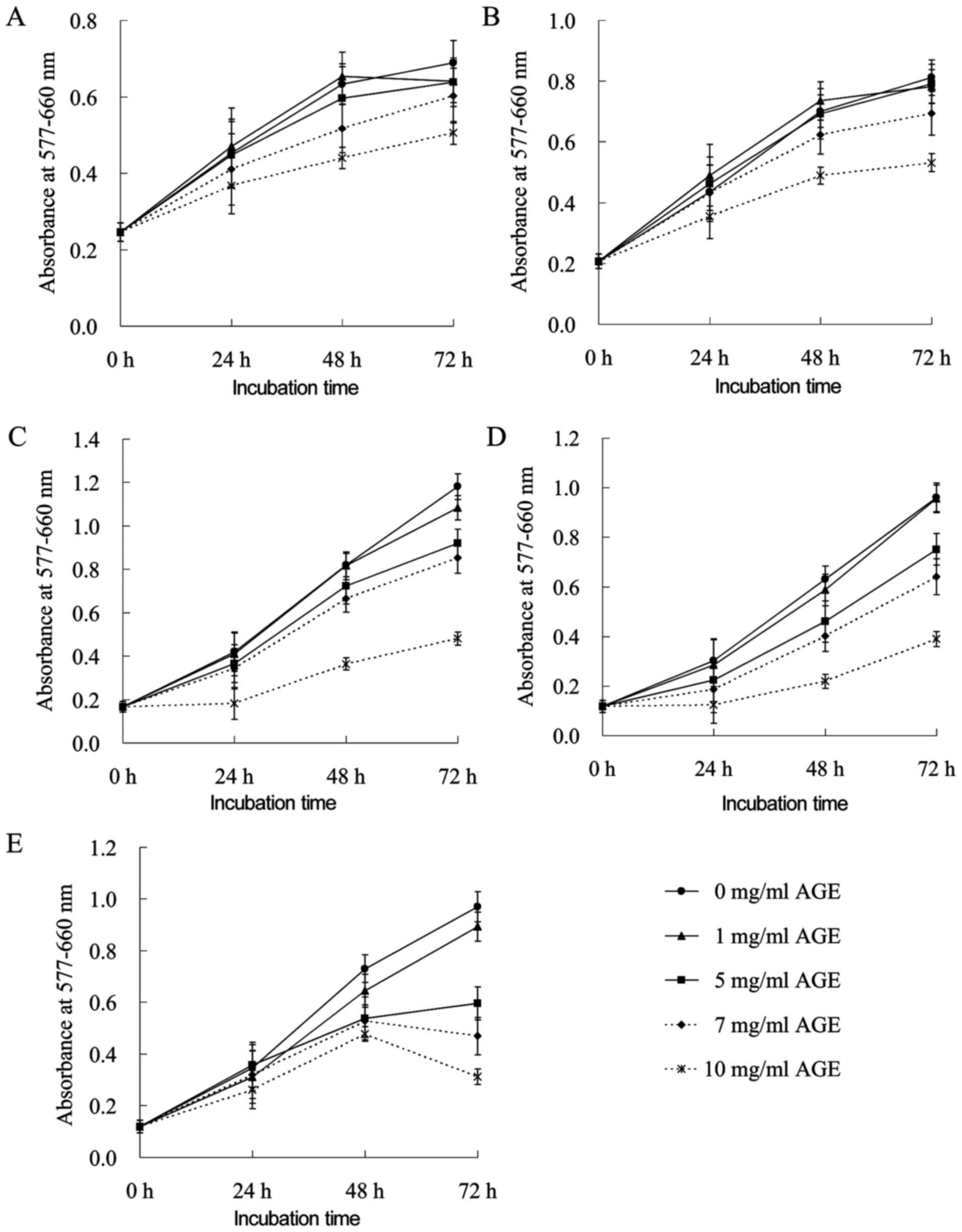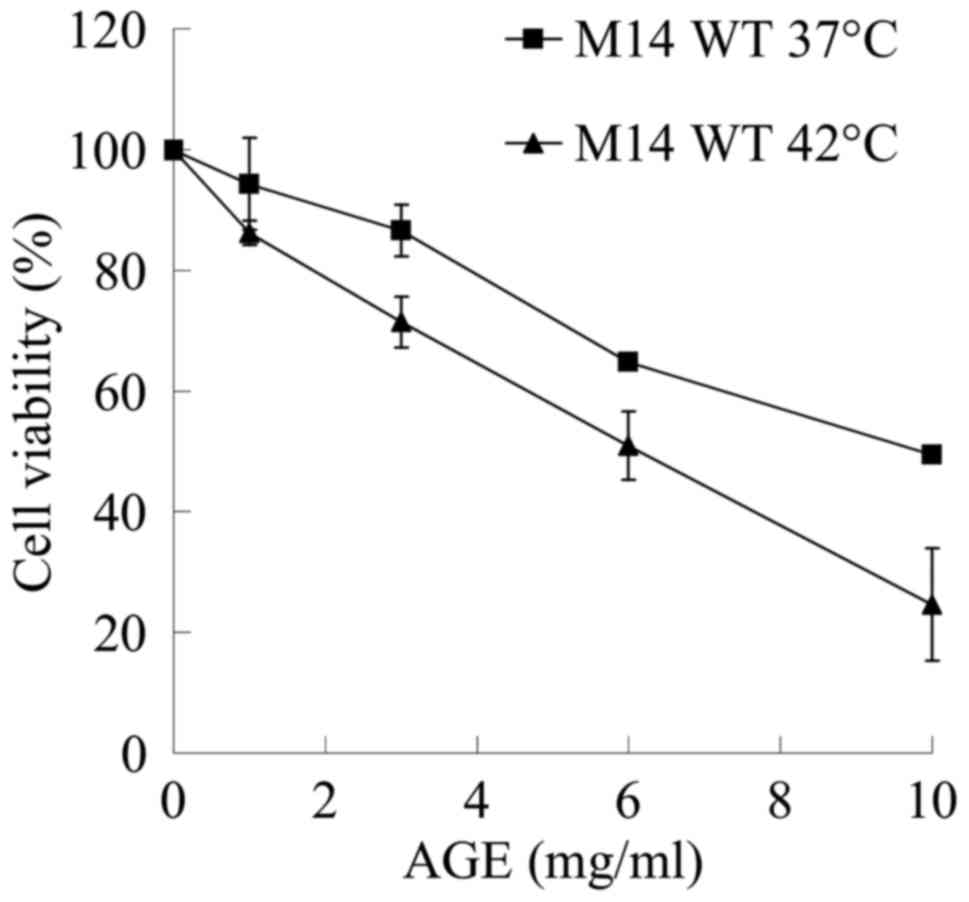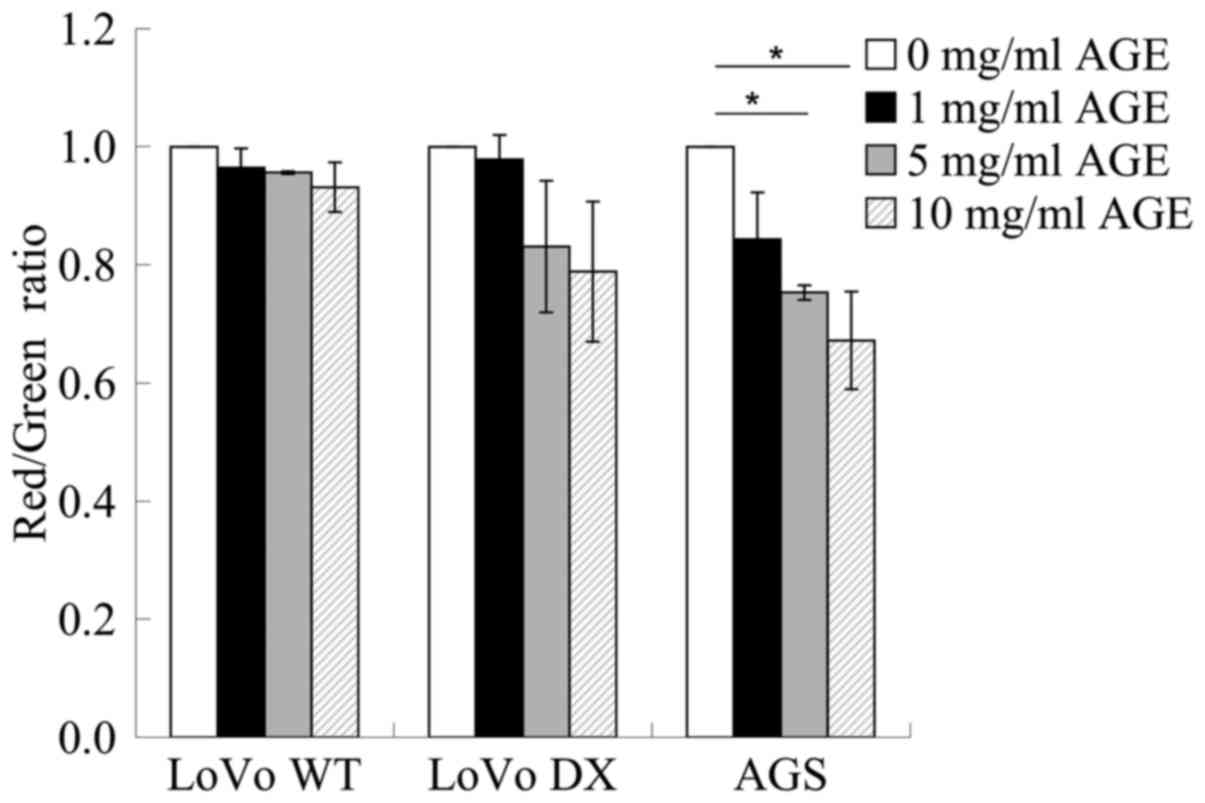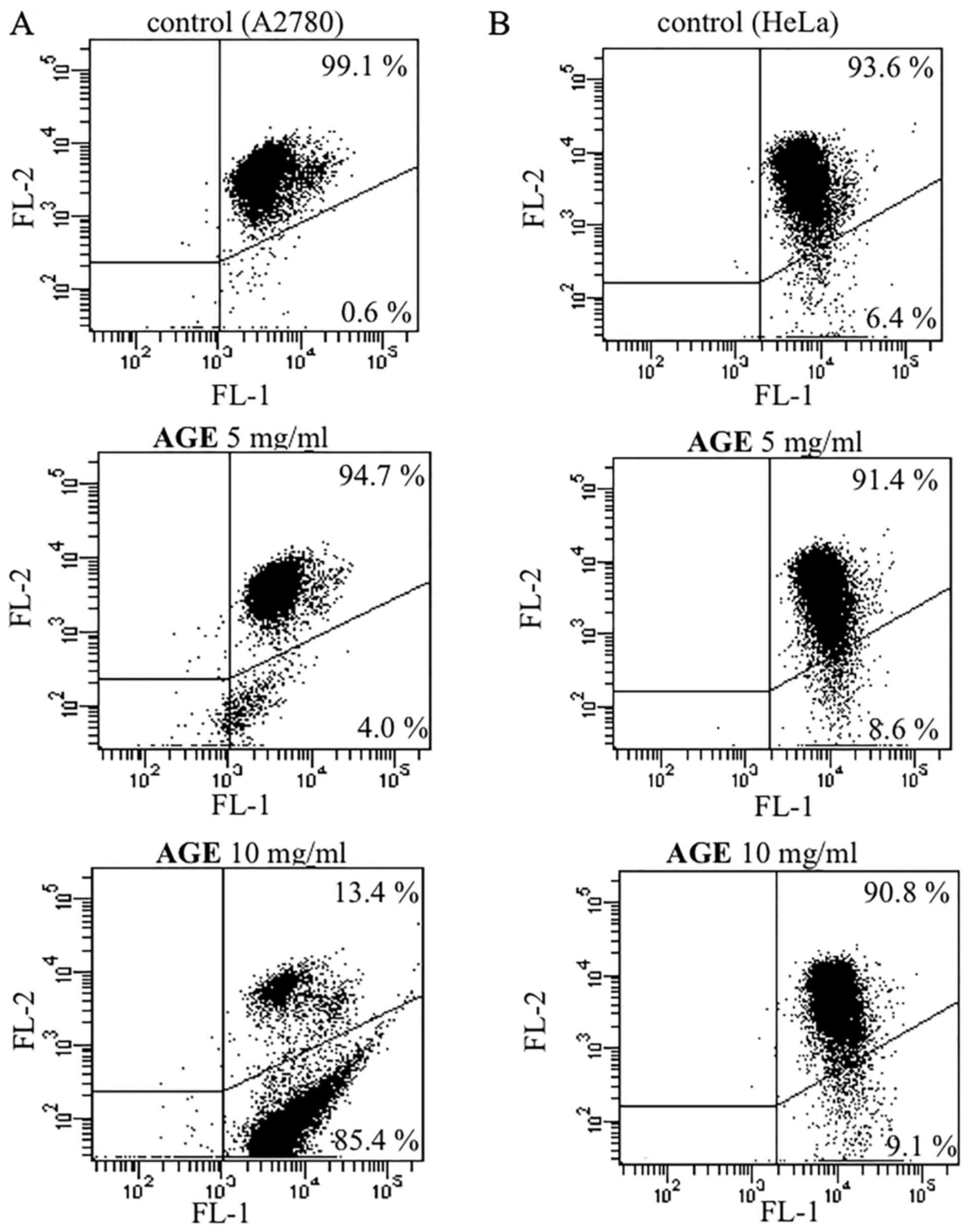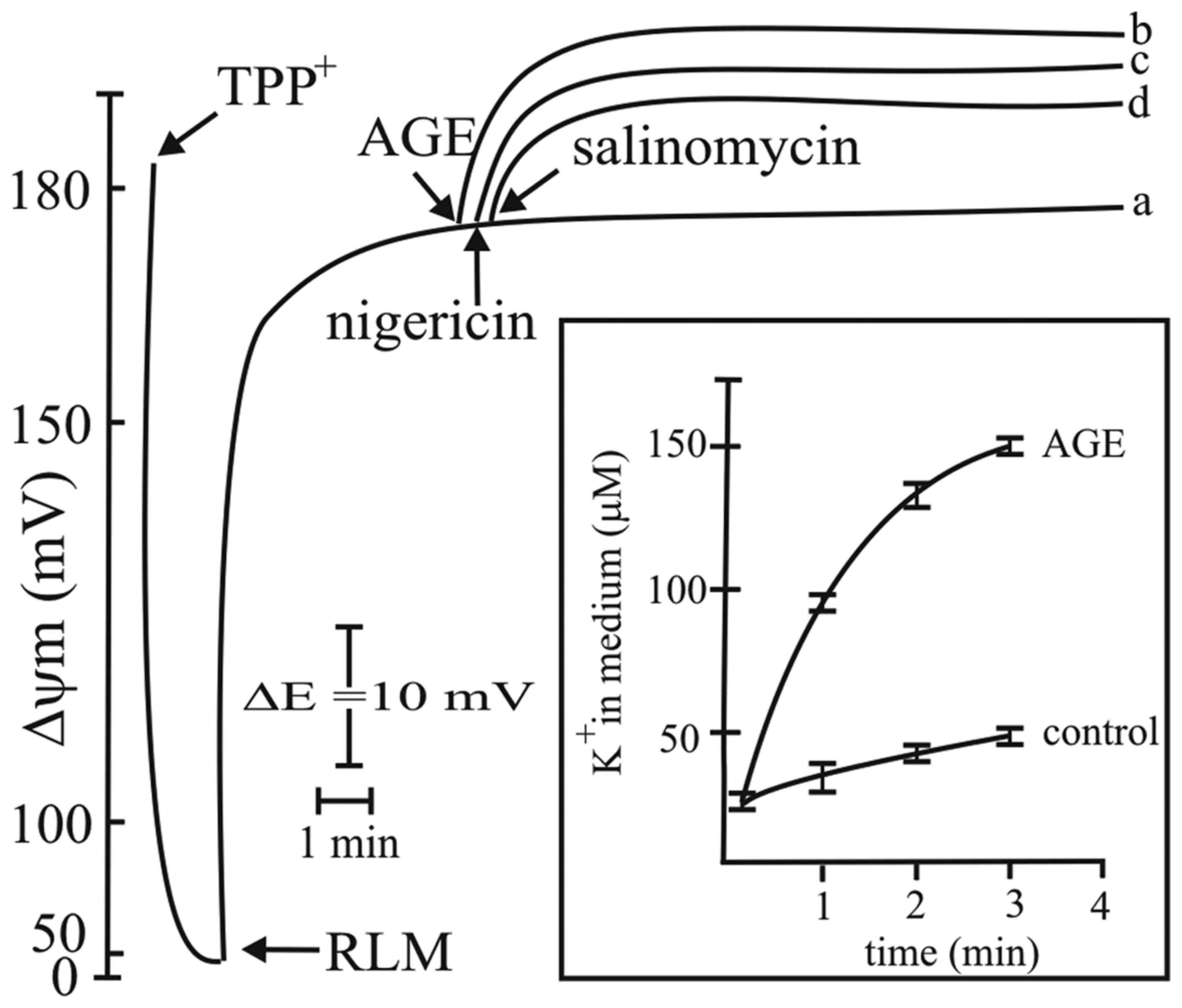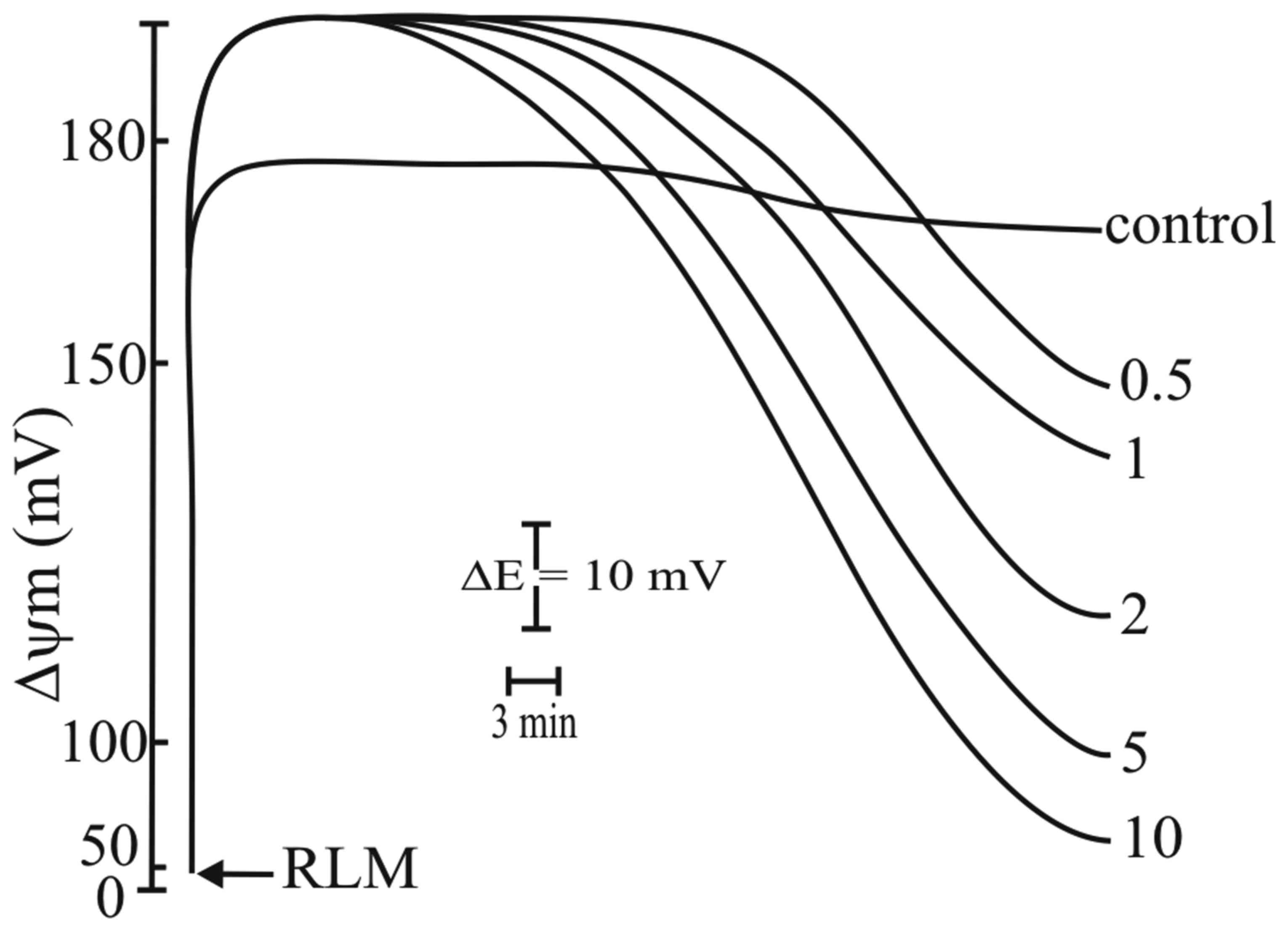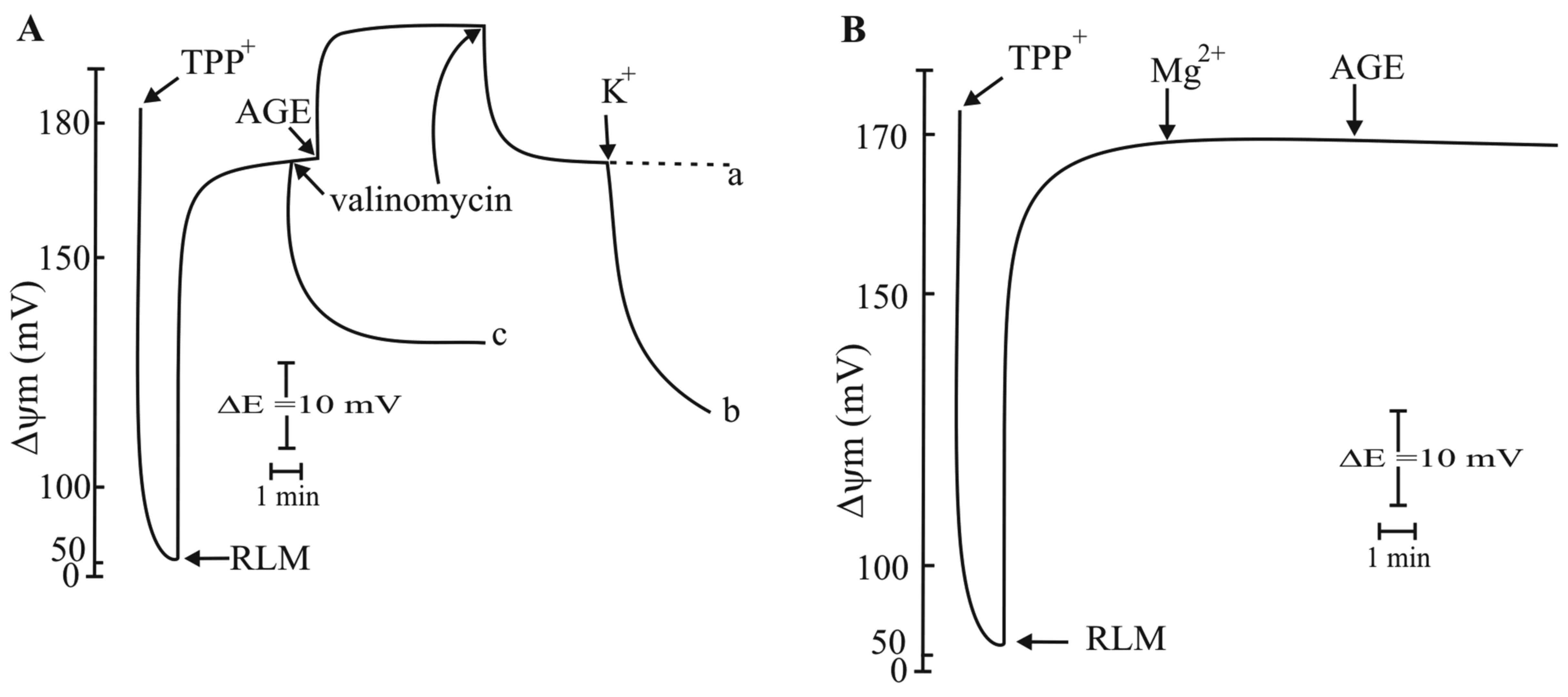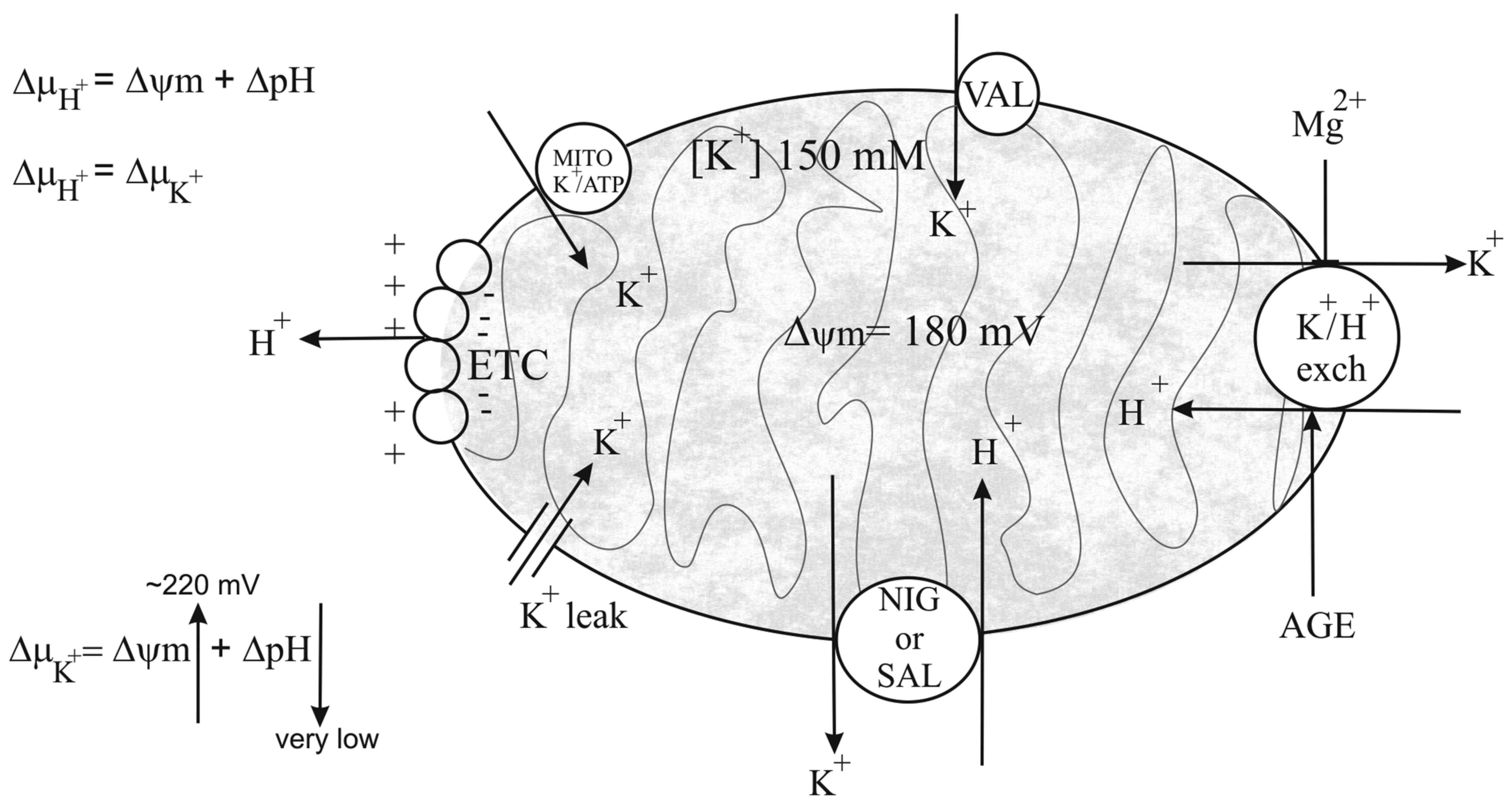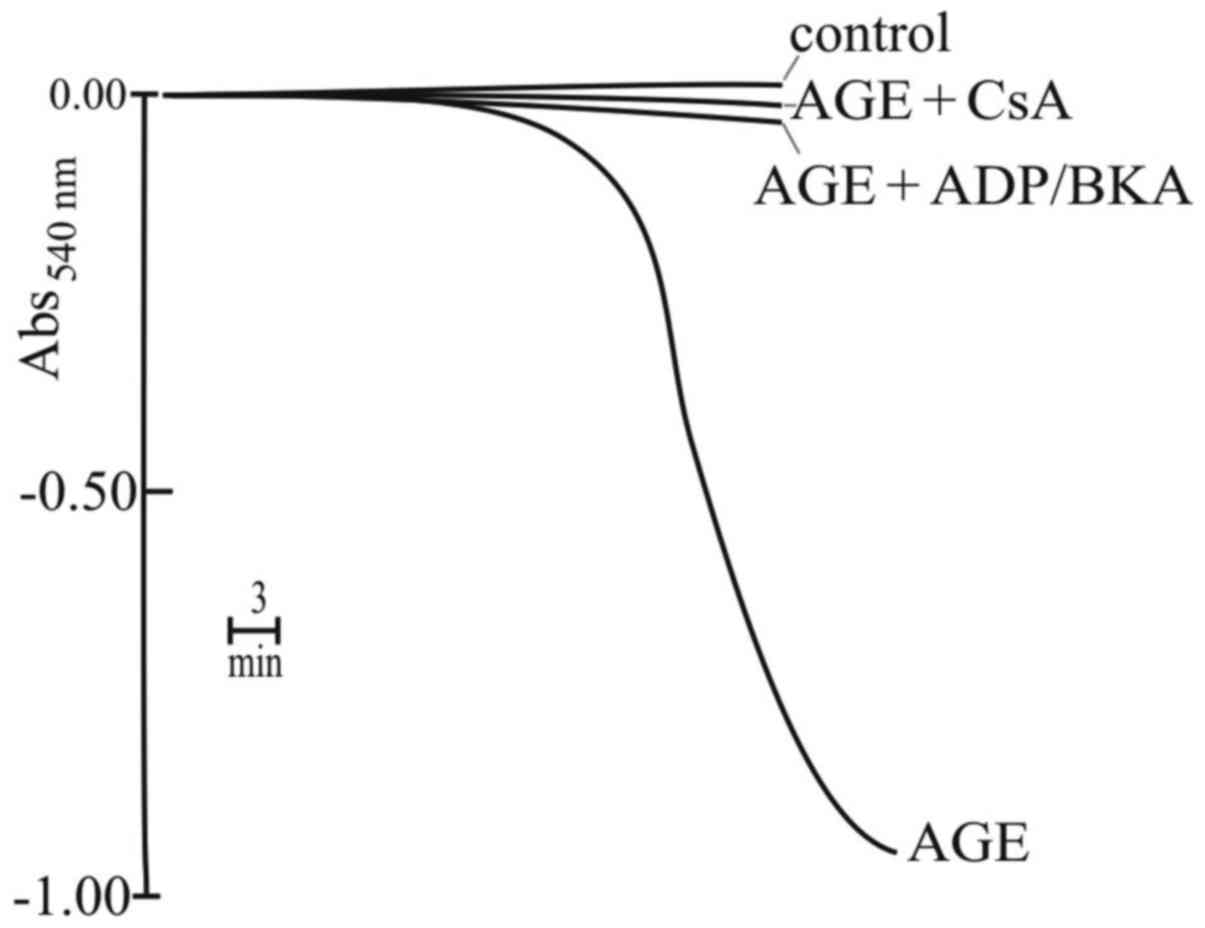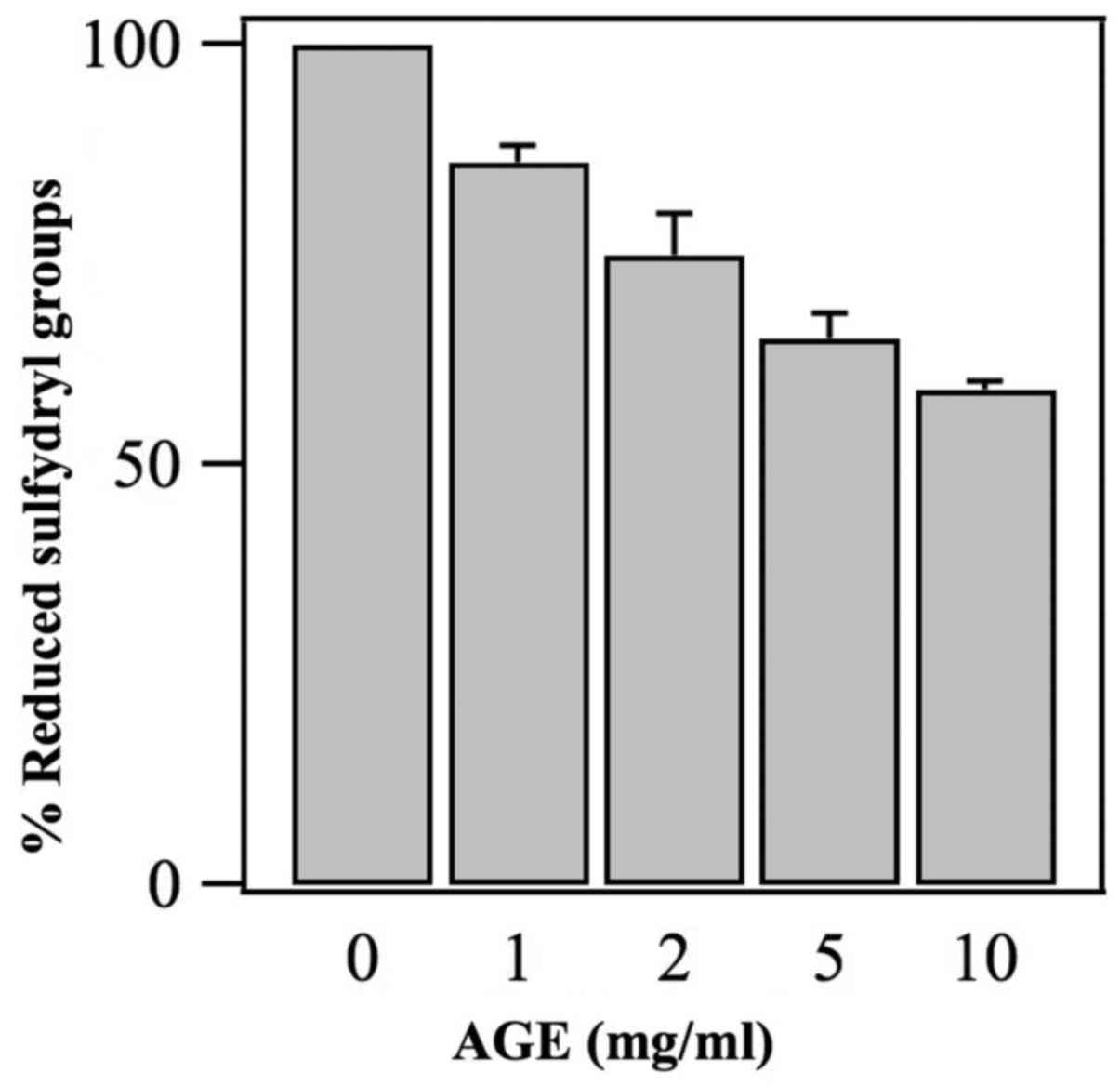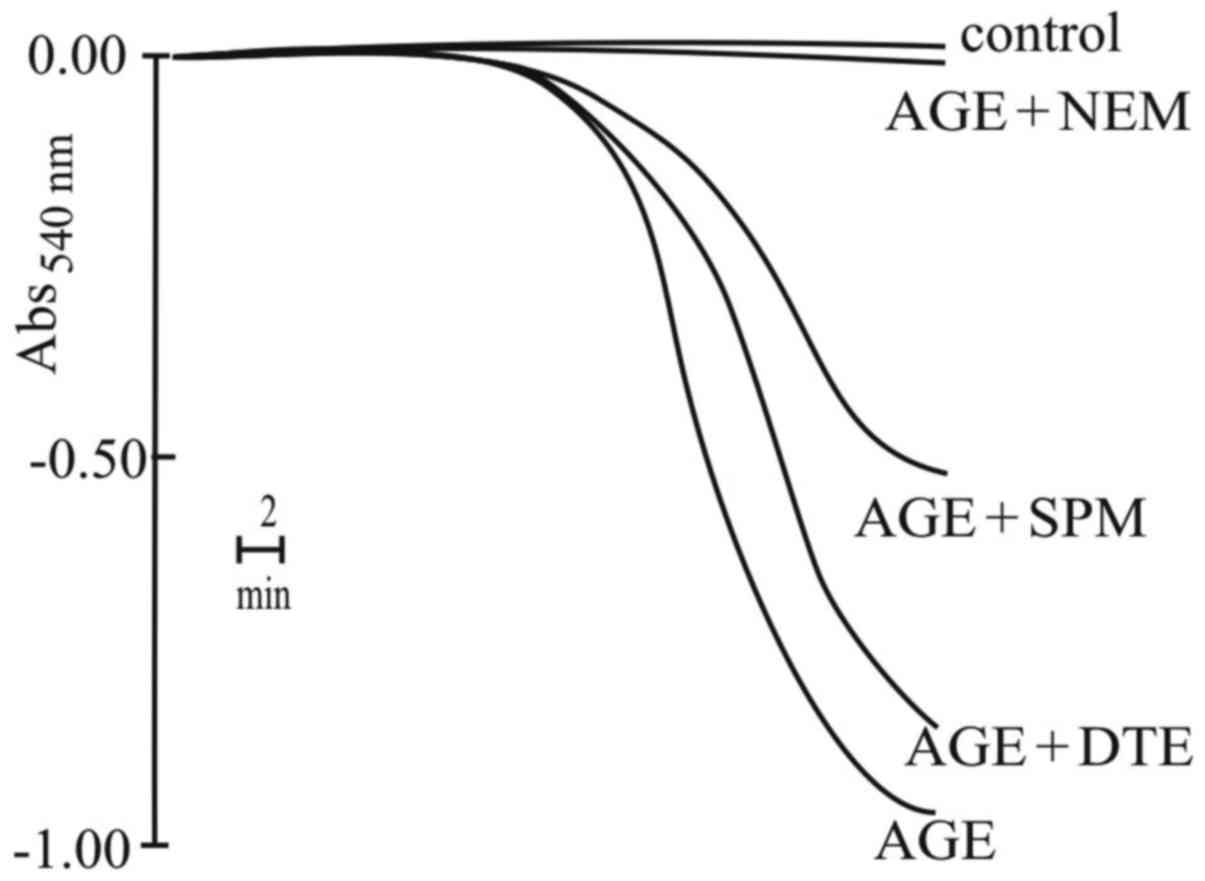|
1
|
Gallo M, Altieri F, Di Stadio CS, Miselli
G, Villano V, Arcari P and Rippa E: An overview on factors
underlying gastric cancer; strategies for its management with
particular reference to diet. J Gastrointest Dig Syst. 6:399–408.
2016. View Article : Google Scholar
|
|
2
|
Fleischauer AT, Poole C and Arab L: Garlic
consumption and cancer prevention: Meta-analyses of colorectal and
stomach cancers. Am J Clin Nutr. 72:1047–1052. 2000. View Article : Google Scholar : PubMed/NCBI
|
|
3
|
Rahman K and Lowe GM: Garlic and
cardiovascular disease: A critical review. J Nutr. 136(Suppl 3):
736S–740S. 2006. View Article : Google Scholar : PubMed/NCBI
|
|
4
|
Banerjee SK and Maulik SK: Effect of
garlic on cardiovascular disorders: A review. Nutr J. 1:42002.
View Article : Google Scholar
|
|
5
|
Chu Q, Ling MT, Feng H, Cheung HW, Tsao
SW, Wang X and Wong YC: A novel anticancer effect of garlic
derivatives: Inhibition of cancer cell invasion through restoration
of E-cadherin expression. Carcinogenesis. 27:2180–2189. 2006.
View Article : Google Scholar : PubMed/NCBI
|
|
6
|
Thomson M and Ali M: Garlic [Allium
sativum]: A review of its potential use as an anti-cancer agent.
Curr Cancer Drug Targets. 3:67–81. 2003. View Article : Google Scholar : PubMed/NCBI
|
|
7
|
Li G, Qiao C, Lin R, Pinto J, Osborne M
and Tiwari R: Antiproliferative effects of garlic constituents in
cultured human breast-cancer cells. Oncol Rep. 2:787–791.
1995.PubMed/NCBI
|
|
8
|
Shirin H, Pinto JT, Kawabata Y, Soh JW,
Delohery T, Moss SF, Murty V, Rivlin RS, Holt PR and Weinstein IB:
Antiproliferative effects of S-allylmercaptocysteine on colon
cancer cells when tested alone or in combination with sulindac
sulfide. Cancer Res. 61:725–731. 2001.PubMed/NCBI
|
|
9
|
Hosono T, Fukao T, Ogihara J, Ito Y, Shiba
H, Seki T and Ariga T: Diallyl trisulfide suppresses the
proliferation and induces apoptosis of human colon cancer cells
through oxidative modification of beta-tubulin. J Biol Chem.
280:41487–41493. 2005. View Article : Google Scholar : PubMed/NCBI
|
|
10
|
Howard EW, Ling MT, Chua CW, Cheung HW,
Wang X and Wong YC: Garlic-derived S-allylmercaptocysteine is a
novel in vivo antimetastatic agent for androgen-independent
prostate cancer. Clin Cancer Res. 13:1847–1856. 2007. View Article : Google Scholar : PubMed/NCBI
|
|
11
|
Sriram N, Kalayarasan S, Ashokkumar P,
Sureshkumar A and Sudhandiran G: Diallyl sulfide induces apoptosis
in Colo 320 DM human colon cancer cells: Involvement of caspase-3,
NF-kappaB, and ERK-2. Mol Cell Biochem. 311:157–165. 2008.
View Article : Google Scholar : PubMed/NCBI
|
|
12
|
Lai KC, Kuo CL, Ho HC, Yang JS, Ma CY, Lu
HF, Huang HY, Chueh FS, Yu CC and Chung JG: Diallyl sulfide,
diallyl disulfide and diallyl trisulfide affect drug resistant gene
expression in colo 205 human colon cancer cells in vitro and in
vivo. Phytomedicine. 19:625–630. 2012. View Article : Google Scholar : PubMed/NCBI
|
|
13
|
Yan JY, Tian FM, Hu WN, Zhang JH, Cai HF
and Li N: Apoptosis of human gastric cancer cells line SGC 7901
induced by garlic-derived compound S-allylmercaptocysteine (SAMC).
Eur Rev Med Pharmacol Sci. 17:745–751. 2013.PubMed/NCBI
|
|
14
|
Zhang H, Wang K, Lin G and Zhao Z:
Antitumor mechanisms of S-allyl mercaptocysteine for breast cancer
therapy. BMC Complement Altern Med. 14:2702014. View Article : Google Scholar : PubMed/NCBI
|
|
15
|
Kodera Y, Ushijima M, Amano H, Suzuki JI
and Matsutomo T: Chemical and biological properties of
S-1-propenyl-l-cysteine in aged garlic extract. Molecules.
22:E5702017. View Article : Google Scholar : PubMed/NCBI
|
|
16
|
Franco-Enzástiga Ú, Santana-Martínez RA,
Silva-Islas CA, Barrera-Oviedo D, Chánez-Cárdenas ME and Maldonado
PD: Chronic administration of S-allylcysteine activates Nrf2 factor
and enhances the activity of antioxidant enzymes in the striatum,
frontal cortex and hippocampus. Neurochem Res. 42:3041–3051. 2017.
View Article : Google Scholar : PubMed/NCBI
|
|
17
|
Imai J, Ide N, Nagae S, Moriguchi T,
Matsuura H and Itakura Y: Antioxidant and radical scavenging
effects of aged garlic extract and its constituents. Planta Med.
60:417–420. 1994. View Article : Google Scholar : PubMed/NCBI
|
|
18
|
Wei Z and Lau BHS: Garlic inhibits free
radical generation and augments antioxidant enzyme activity in
vascular endothelial cells. Nutr Res. 18:61–70. 1998. View Article : Google Scholar
|
|
19
|
Borek C: Antioxidant health effects of
aged garlic extract. J Nutr. 131:1010S–1015S. 2001. View Article : Google Scholar : PubMed/NCBI
|
|
20
|
Tanaka S, Haruma K, Kunihiro M, Nagata S,
Kitadai Y, Manabe N, Sumii M, Yoshihara M, Kajiyama G and Chayama
K: Effects of aged garlic extract (AGE) on colorectal adenomas: A
double-blinded study. Hiroshima J Med Sci. 53:39–45. 2004.
|
|
21
|
Matsuura N, Miyamae Y, Yamane K, Nagao Y,
Hamada Y, Kawaguchi N, Katsuki T, Hirata K, Sumi S and Ishikawa H:
Aged garlic extract inhibits angiogenesis and proliferation of
colorectal carcinoma cells. J Nutr. 136(Suppl 3): 842S–846S. 2006.
View Article : Google Scholar : PubMed/NCBI
|
|
22
|
Budoff MJ, Takasu J, Flores FR, Niihara Y,
Lu B, Lau BH, Rosen RT and Amagase H: Inhibiting progression of
coronary calcification using Aged Garlic Extract in patients
receiving statin therapy: A preliminary study. Prev Med.
39:985–991. 2004. View Article : Google Scholar : PubMed/NCBI
|
|
23
|
Morihara N, Hino A, Yamaguchi T and Suzuki
J: Aged garlic extract suppresses the development of
atherosclerosis in apolipoprotein E-knockout mice. J Nutr.
146:460S–463S. 2016. View Article : Google Scholar : PubMed/NCBI
|
|
24
|
Ried K, Travica N and Sali A: The effect
of aged garlic extract on blood pressure and other cardiovascular
risk factors in uncontrolled hypertensives: The AGE at Heart trial.
Integr Blood Press Control. 9:9–21. 2016. View Article : Google Scholar : PubMed/NCBI
|
|
25
|
Thorajak P, Pannangrong W, Welbat JU,
Chaijaroonkhanarak W, Sripanidkulchai K and Sripanidkulchai B:
Effects of Aged Garlic Extract on cholinergic, glutamatergic and
GABAergic systems with regard to cognitive impairment in Aβ-induced
rats. Nutrients. 9:686–698. 2017. View Article : Google Scholar
|
|
26
|
Morihara N, Hino A, Miki S, Takashima M
and Suzuki JI: Aged garlic extract suppresses inflammation in
apolipoprotein E-knockout mice. Mol Nutr Food Res. 61:10–16. 2017.
View Article : Google Scholar
|
|
27
|
Zeinali H, Baluchnejadmojarad T, Fallah S,
Sedighi M, Moradi N and Roghani M: S-allyl cysteine improves
clinical and neuropathological features of experimental autoimmune
encephalomyelitis in C57BL/6 mice. Biomed Pharmacother. 97:557–563.
2018. View Article : Google Scholar
|
|
28
|
Katsuki T, Hirata K, Ishikawa H, Matsuura
N, Sumi S and Itoh H: Aged garlic extract has chemopreventative
effects on 1,2-dimethylhydrazine-induced colon tumors in rats. J
Nutr. 136(Suppl 3): 847S–851S. 2006. View Article : Google Scholar : PubMed/NCBI
|
|
29
|
Jikihara H, Qi G, Nozoe K, Hirokawa M,
Sato H, Sugihara Y and Shimamoto F: Aged garlic extract inhibits
1,2-dimethylhydrazine-induced colon tumor development by
suppressing cell proliferation. Oncol Rep. 33:1131–1140. 2015.
View Article : Google Scholar : PubMed/NCBI
|
|
30
|
Amagase H: Clarifying the real bioactive
constituents of garlic. J Nutr. 136(Suppl 3): 716S–725S. 2006.
View Article : Google Scholar : PubMed/NCBI
|
|
31
|
Matsutomo T and Kodera Y: Development of
an analytic method for sulfur compounds in aged garlic extract with
the use of a postcolumn high performance liquid chromatography
method with sulfur-specific detection. J Nutr. 146:450S–455S. 2016.
View Article : Google Scholar : PubMed/NCBI
|
|
32
|
Leanza L, Zoratti M, Gulbins E and Szabo
I: Mitochondrial ion channels as oncological targets. Oncogene.
33:5569–5581. 2014. View Article : Google Scholar : PubMed/NCBI
|
|
33
|
Kyo E, Uda N, Kasuga S and Itakura Y:
Immunomodulatory effects of aged garlic extract. J Nutr.
131:1075S–1079S. 2001. View Article : Google Scholar : PubMed/NCBI
|
|
34
|
Morihara N, Sumioka I, Moriguchi T, Uda N
and Kyo E: Aged garlic extract enhances production of nitric oxide.
Life Sci. 71:509–517. 2002. View Article : Google Scholar : PubMed/NCBI
|
|
35
|
Grandi M, Geroni C and Giuliani FC:
Isolation and characterization of a human colon adenocarcinoma cell
line resistant to doxorubicin. Br J Cancer. 54:515–518. 1986.
View Article : Google Scholar : PubMed/NCBI
|
|
36
|
Agostinelli E, Belli F, Molinari A,
Condello M, Palmigiani P, Vedova LD, Marra M, Seiler N and Arancia
G: Toxicity of enzymatic oxidation products of spermine to human
melanoma cells (M14): Sensitization by heat and MDL 72527. Biochim
Biophys Acta. 1763:1040–1050. 2006. View Article : Google Scholar : PubMed/NCBI
|
|
37
|
Molinari A, Toccacieli L, Calcabrini A,
Diociaiuti M, Cianfriglia M and Arancia G: Induction of
P-glycoprotein expression on the plasma membrane of human melanoma
cells. Anticancer Res. 20:2691–2696. 2000.PubMed/NCBI
|
|
38
|
Dolfini E, Dasdia T, Arancia G, Molinari
A, Calcabrini A, Scheper RJ, Flens MJ, Gariboldi MB and Monti E:
Characterization of a clonal human colon adenocarcinoma line
intrinsically resistant to doxorubicin. Br J Cancer. 76:67–76.
1997. View Article : Google Scholar : PubMed/NCBI
|
|
39
|
Agostinelli E, Condello M, Molinari A,
Tempera G, Viceconte N and Arancia G: Cytotoxicity of spermine
oxidation products to multidrug resistant melanoma M14 ADR2 cells:
Sensitization by the MDL 72527 lysosomotropic compound. Int J
Oncol. 35:485–498. 2009. View Article : Google Scholar : PubMed/NCBI
|
|
40
|
Frezza C, Cipolat S and Scorrano L:
Organelle isolation: Functional mitochondria from mouse liver,
muscle and cultured fibroblasts. Nat Protoc. 2:287–295. 2007.
View Article : Google Scholar : PubMed/NCBI
|
|
41
|
Gornall AG, Bardawill CJ and David MM:
Determination of serum proteins by means of the biuret reaction. J
Biol Chem. 177:751–766. 1949.PubMed/NCBI
|
|
42
|
Kamo N, Muratsugu M, Hongoh R and Kobatake
Y: Membrane potential of mitochondria measured with an electrode
sensitive to tetraphenyl phosphonium and relationship between
proton electrochemical potential and phosphorylation potential in
steady state. J Membr Biol. 49:105–121. 1979. View Article : Google Scholar : PubMed/NCBI
|
|
43
|
Santos AC, Uyemura SA, Lopes JLC, Bazon
JN, Mingatto FE and Curti C: Effect of naturally occurring
flavonoids on lipid peroxidation and membrane permeability
transition in mitochondria. Free Radic Biol Med. 24:1455–1461.
1998. View Article : Google Scholar : PubMed/NCBI
|
|
44
|
Crompton M and Costi A: Kinetic evidence
for a heart mitochondrial pore activated by Ca2+,
inorganic phosphate and oxidative stress. A potential mechanism for
mitochondrial dysfunction during cellular Ca2+ overload.
Eur J Biochem. 178:489–501. 1988. View Article : Google Scholar : PubMed/NCBI
|
|
45
|
Toninello A, Miotto G, Siliprandi D,
Siliprandi N and Garlid KD: On the mechanism of spermine transport
in liver mitochondria. J Biol Chem. 263:19407–19411.
1988.PubMed/NCBI
|
|
46
|
Managò A, Leanza L, Carraretto L, Sassi N,
Grancara S, Quintana-Cabrera R, Trimarco V, Toninello A, Scorrano
L, Trentin L, et al: Early effects of the antineoplastic agent
salinomycin on mitochondrial function. Cell Death Dis. 6:e19302015.
View Article : Google Scholar : PubMed/NCBI
|
|
47
|
Mitchell P and Moyle J: Estimation of
membrane potential and pH difference across the cristae membrane of
rat liver mitochondria. Eur J Biochem. 7:471–484. 1969. View Article : Google Scholar : PubMed/NCBI
|
|
48
|
Nakashima RA and Garlid KD: Quinine
inhibition of Na+ and K+ transport provides
evidence for two cation/H+ exchangers in rat liver
mitochondria. J Biol Chem. 257:9252–9254. 1982.PubMed/NCBI
|
|
49
|
Zoratti M and Szabò I: The mitochondrial
permeability transition. Biochim Biophys Acta. 1241:139–176. 1995.
View Article : Google Scholar : PubMed/NCBI
|
|
50
|
Susin SA, Zamzami N and Kroemer G:
Mitochondria as regulators of apoptosis: Doubt no more. Biochim
Biophys Acta. 1366:151–165. 1998. View Article : Google Scholar : PubMed/NCBI
|
|
51
|
Agostinelli E, Belli F, Dalla Vedova L,
Marra M, Crateri P and Arancia G: Hyperthermia enhances
cytotoxicity of amine oxidase and spermine on drug-resistant LoVo
colon adenocarcinoma cells. Int J Oncol. 28:1543–1553.
2006.PubMed/NCBI
|
|
52
|
Takahashi T, Horie H, Kojima O and Itoh M:
Preoperative combined treatment with radiation, intraluminal
hyperthermia, and 5-fluorouracil suppositories for patients with
rectal cancer. Surg Today. 23:1043–1048. 1993. View Article : Google Scholar : PubMed/NCBI
|
|
53
|
Vernon CC, Hand JW, Field SB, Machin D,
Whaley JB, van der Zee J, van Putten WL, van Rhoon GC, van Dijk JD,
González González D, et al International Collaborative Hyperthermia
Group: Radiotherapy with or without hyperthermia in the treatment
of superficial localized breast cancer: Results from five
randomized controlled trials. Int J Radiat Oncol Biol Phys.
35:731–744. 1996. View Article : Google Scholar : PubMed/NCBI
|
|
54
|
Bates DA and Mackillop WJ: The effect of
hyperthermia in combination with melphalan on drug-sensitive and
drug-resistant CHO cells in vitro. Br J Cancer. 62:183–188. 1990.
View Article : Google Scholar : PubMed/NCBI
|
|
55
|
Dahl O: Mechanisms of thermal enhancement
of chemotherapeutic cytotoxicity. Hyperthermia and Oncology. Urano
M and Douple E: 4. Utrecht: VSP; pp. 9–28. 1994
|
|
56
|
Reinhold HS and Endrich B: Tumour
microcirculation as a target for hyperthermia. Int J Hyperthermia.
2:111–137. 1986. View Article : Google Scholar : PubMed/NCBI
|
|
57
|
Agostinelli E, Arancia G, Calcabrini A,
Matarrese P, Mondovì B and Pietrangeli P: Hyperthermia-induced
biochemical and ultra-structural modifications in cultured cells.
Exp Oncol. 17:269–276. 1995.
|
|
58
|
Maeda H, Seymour LW and Miyamoto Y:
Conjugates of anticancer agents and polymers: Advantages of
macromolecular therapeutics in vivo. Bioconjug Chem. 3:351–362.
1992. View Article : Google Scholar : PubMed/NCBI
|
|
59
|
Demers N, Agostinelli E, Averill-Bates DA
and Fortier G: Immobilization of native and poly(ethylene
glycol)-treated ('PEGylated') bovine serum amine oxidase into a
biocompatible hydrogel. Biotechnol Appl Biochem. 33:201–207. 2001.
View Article : Google Scholar : PubMed/NCBI
|
|
60
|
Cheng Z, Al Zaki A, Hui JZ, Muzykantov VR
and Tsourkas A: Multifunctional nanoparticles: Cost versus benefit
of adding targeting and imaging capabilities. Science. 338:903–910.
2012. View Article : Google Scholar : PubMed/NCBI
|
|
61
|
Bertrand N, Wu J, Xu X, Kamaly N and
Farokhzad OC: Cancer nanotechnology: The impact of passive and
active targeting in the era of modern cancer biology. Adv Drug
Deliv Rev. 66:2–25. 2014. View Article : Google Scholar :
|
|
62
|
Agostinelli E, Vianello F, Magliulo G,
Thomas T and Thomas TJ: Nanoparticle strategies for cancer
therapeutics: Nucleic acids, polyamines, bovine serum amine oxidase
and iron oxide nanoparticles (Review). Int J Oncol. 46:5–16. 2015.
View Article : Google Scholar
|
|
63
|
Venditti I, Hassanein TF, Fratoddi I,
Fontana L, Battocchio C, Rinaldi F, Carafa M, Marianecci C,
Diociaiuti M, Agostinelli E, et al: Bioconjugation of gold-polymer
core-shell nanoparticles with bovine serum amine oxidase for
biomedical applications. Colloids Surf B Biointerfaces.
134:314–321. 2015. View Article : Google Scholar : PubMed/NCBI
|
|
64
|
Montanari E, Capece S, Di Meo C, Meringolo
M, Coviello T, Agostinelli E and Matricardi P: Hyaluronic acid
nanohydrogels as a useful tool for BSAO immobilization in the
treatment of melanoma cancer cells. Macromol Biosci. 13:1185–1194.
2013. View Article : Google Scholar : PubMed/NCBI
|
|
65
|
Sinigaglia G, Magro M, Miotto G, Cardillo
S, Agostinelli E, Zboril R, Bidollari E and Vianello F:
Catalytically active bovine serum amine oxidase bound to
fluorescent and magnetically drivable nanoparticles. Int J
Nanomedicine. 7:2249–2259. 2012.PubMed/NCBI
|
|
66
|
Garlid KD, Dos Santos P, Xie ZJ, Costa AD
and Paucek P: Mitochondrial potassium transport: The role of the
mitochondrial ATP-sensitive K(+) channel in cardiac function and
cardioprotection. Biochim Biophys Acta. 1606:1–21. 2003. View Article : Google Scholar : PubMed/NCBI
|
|
67
|
Garlid KD and Paucek P: Mitochondrial
potassium transport: The K(+) cycle. Biochim Biophys Acta.
1606:23–41. 2003. View Article : Google Scholar : PubMed/NCBI
|
|
68
|
Garlid KD: Opening mitochondrial K(ATP) in
the heart - what happens, and what does not happen. Basic Res
Cardiol. 95:275–279. 2000. View Article : Google Scholar : PubMed/NCBI
|
|
69
|
Tian J, Liu J, Garlid KD, Shapiro JI and
Xie Z: Involvement of mitogen-activated protein kinases and
reactive oxygen species in the inotropic action of ouabain on
cardiac myocytes. A potential role for mitochondrial K(ATP)
channels. Mol Cell Biochem. 242:181–187. 2003. View Article : Google Scholar : PubMed/NCBI
|
|
70
|
Greenbaum NL and Wilson DF: The
distribution of inorganic phosphate and malate between intra- and
extramitochondrial spaces. Relationship with the transmembrane pH
difference. J Biol Chem. 260:873–879. 1985.PubMed/NCBI
|
|
71
|
Halestrap AP and Davidson AM: Inhibition
of Ca2(+)-induced large-amplitude swelling of liver and heart
mitochondria by cyclosporin is probably caused by the inhibitor
binding to mitochondrial-matrix peptidyl-prolyl cis-trans isomerase
and preventing it interacting with the adenine nucleotide
translocase. Biochem J. 268:153–160. 1990. View Article : Google Scholar : PubMed/NCBI
|
|
72
|
Battaglia V, Brunati AM, Fiore C, Rossi
CA, Salvi M, Tibaldi E, Palermo M, Armanini D and Toninello A:
Glycyrrhetinic acid as inhibitor or amplifier of permeability
transition in rat heart mitochondria. Biochim Biophys Acta.
1778:313–323. 2008. View Article : Google Scholar
|
|
73
|
Salvi M, Brunati AM, Clari G and Toninello
A: Interaction of genistein with the mitochondrial electron
transport chain results in opening of the membrane transition pore.
Biochim Biophys Acta. 1556:187–196. 2002. View Article : Google Scholar : PubMed/NCBI
|















